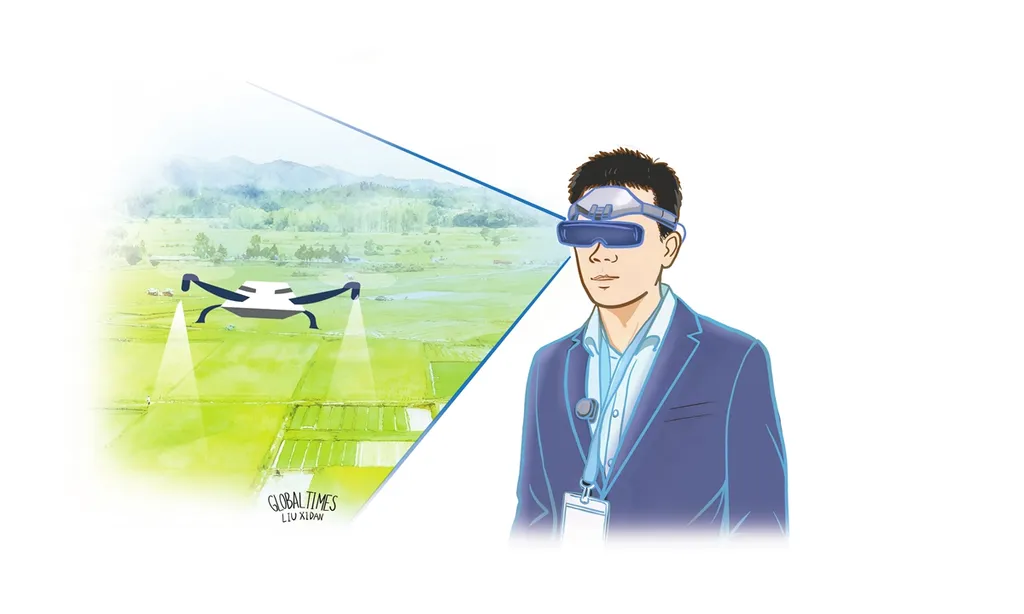At a recent expo in China focused on the grain, oilseed, and soybean industries, a suite of perceptive, AI-enabled agricultural devices was unveiled, capturing the attention of attendees and industry observers alike. Among the showcased technologies was an unexpected addition: augmented reality (AR) glasses. According to CCTV News, these glasses function as a portable crop-health analysis tool, integrating AI with Internet-of-Things sensors. When worn by farmers, the device makes signs of leaf disease and variations in soil-moisture levels “clearly visible,” offering a novel approach to precision agriculture.
Although the technology is not yet widely deployed, the AR glasses provide a clear window into how China is incorporating digital tools into agricultural practices to reinforce the foundations of food security. The adoption of AR-based diagnostics is part of a broader digital transformation underway in Chinese agriculture. Technologies such as intelligent seeding systems, water-conservation methods, and AI-driven fertilization plans continue to evolve and expand. Together, these tools constitute an emerging technical framework that supports a gradual shift toward data-driven farm management, improving efficiency and strengthening the resilience of domestic food production amid global climate uncertainty and rising geopolitical pressures on global supply chains.
China, as a major agricultural producer, is accelerating the development of new quality productive forces, applying technology across production, storage, and processing. The country is steadily shifting from labor-intensive methods toward more modernized, information-driven operations. While this transformation is ongoing, it is expected to contribute positively to both domestic and global food security.
The recent increases in China’s grain output and soybean self-sufficiency can be attributed, in part, to the ongoing development of intelligent agriculture. In recent years, developments under the “AI + agriculture” framework have expanded, with applications spanning crop cultivation, livestock management, and the wider production and distribution chain. This integration is gradually enhancing both efficiency and precision across the sector.
The deployment of AI in agriculture depends on several key enablers. First, the continued advancement of AI technology and its adoption in farming practices has introduced new capabilities, supporting more data-driven decision-making and operational efficiency throughout the production process. Second, the expansion of rural digital infrastructure has provided the connectivity necessary for AI-driven systems to operate effectively. Broader network coverage allows for real-time information collection and transmission, making advanced technological solutions more feasible across the country. Third, the accessibility of AI-enabled agricultural tools has improved. As the cost of technology gradually declines, a growing number of farmers are able to incorporate these innovations into their operations, supporting wider adoption and the ongoing modernization of agricultural practices.
However, challenges remain. The implementation of advanced technologies is rarely immediate; it requires continuous iteration and refinement. Farmers and agricultural enterprises must assess whether new solutions are accessible, affordable, and practical for their operations. Despite these hurdles, continued development appears certain. Devices such as the AR glasses showcased at the latest expo offer a tangible view of the potential future of “AI + agriculture” in China. Such innovations are expected to drive growth across the agricultural sector and help strengthen the foundations of the country’s food security, supporting stability even amid continuous changes in international markets.
There remains substantial room for expansion in China’s intelligent agriculture. Next-generation information technologies, led by AI, are likely to play an increasingly important role in shaping the evolution of smart farming. Over time, these tools are expected not only to enhance productivity and efficiency but also to provide a resilient framework for sustainable agricultural development.

